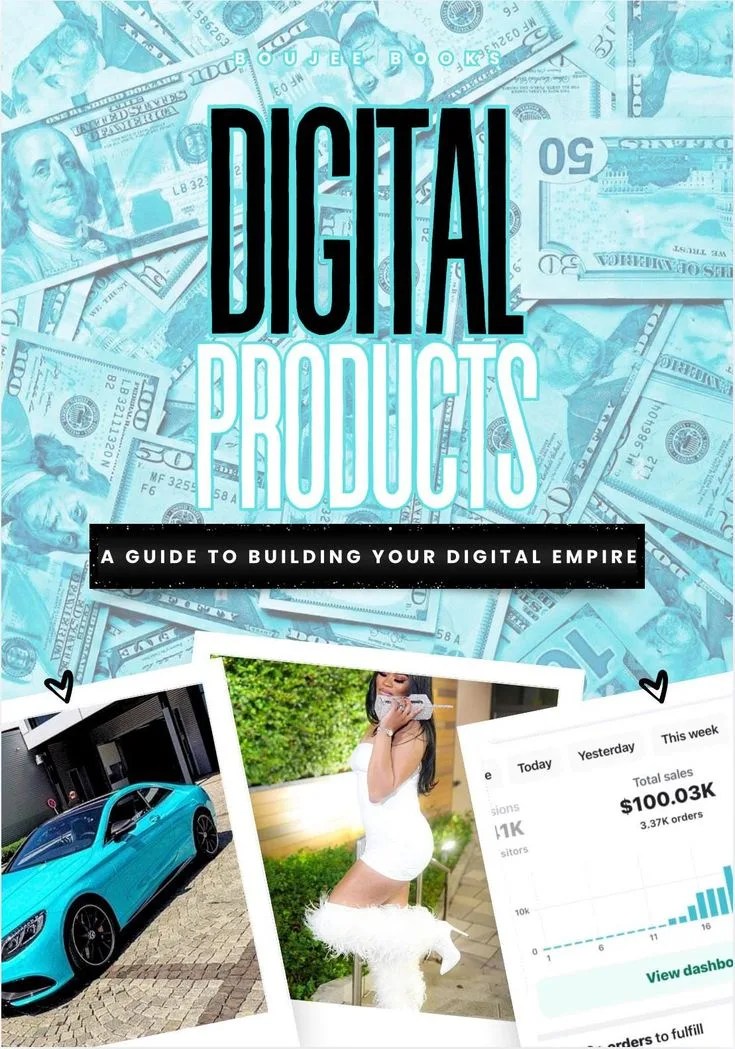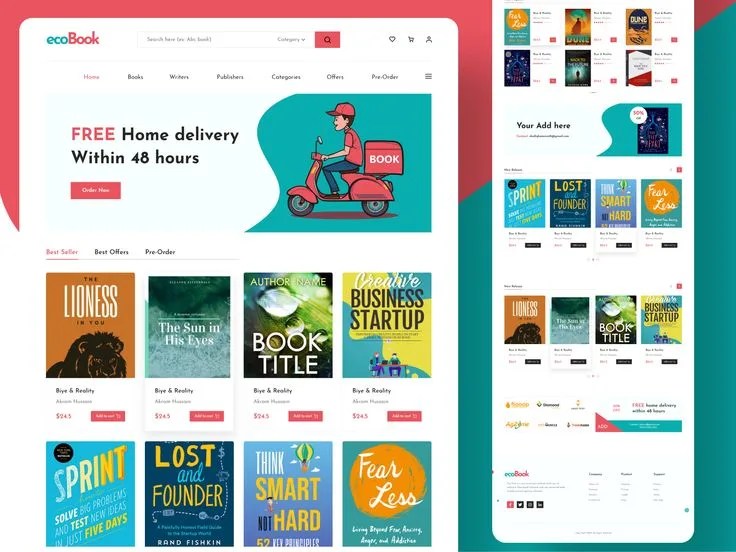Gone are the days when launching a digital product meant hiring a pricey developer, waiting weeks (or months), and praying everything works when it’s time to go live. In today’s no-code world, you can bring your idea to life — all by yourself — even if you can’t write a single line of code.
So, if you’ve been sitting on a brilliant idea, waiting for a miracle tech partner, this one’s for you. Let’s break it down.
Table of Contents
- What Is a Digital Product, Anyway?
- Step 1: Validate Your Idea (Before You Build Anything)
- Step 2: Create Your Digital Product Using Free or Low-Cost Tools
- Step 3: Choose a Platform to Host and Sell
- Step 4: Design a Simple Landing Page (Without a Developer)
- Step 5: Set Up Your Payment System
- Step 6: Automate Product Delivery
- Step 7: Build Hype Before You Launch
- Step 8: Launch Loud and Proud
- Step 9: Use Feedback to Improve and Upsell
- Step 10: Keep the Momentum Going
- Final Thoughts
- FAQs
What Is a Digital Product, Anyway?
Digital products are basically anything you can sell or deliver online — no shipping trucks required. Think:
- Ebooks
- Online courses
- Templates and toolkits
- Stock photos or music
- Membership access
- Software (yup, even that — no coding required with the right tools!)
If it can be downloaded, accessed in a browser, or delivered via email, it’s a digital product.

Step 1: Validate Your Idea (Before You Build Anything)
You might have a genius idea, but does your target audience agree? Before you dive in, make sure people want what you’re offering.
Here’s how to do it:
- Ask your audience: Use Instagram polls, Twitter, or LinkedIn to gauge interest.
- Search online forums: Reddit, Quora, and Facebook groups are gold mines.
- Spy on competitors: Are people buying similar products? Check reviews and pricing.
If you can find 5 people genuinely excited about your idea, you’re onto something.
Step 2: Create Your Digital Product Using Free or Low-Cost Tools
Let’s be real: you don’t need Photoshop, Final Cut Pro, or custom platforms to get going. Here’s what you do need — and how to do it on a budget.
Ebooks or Guides
- Write it in Google Docs or Notion.
- Design it with Canva (free templates galore).
- Export as PDF, and you’re good to go.
Online Courses
- Record your screen and voice with Loom or OBS Studio.
- Upload to platforms like Teachable, Thinkific, or Gumroad.
Templates or Tools
- Design templates in Canva, Google Sheets, or Notion.
- Package them in a ZIP file or link to a view-only doc with copy access.
You don’t need fancy — you need valuable and easy to use.

Step 3: Choose a Platform to Host and Sell
Now you’ve got a shiny new product. Where do you put it?
Here are your best bets — no code, no stress:
Gumroad
Perfect for creators. Upload your product, set a price, and start selling — all from your custom Gumroad link. Handles payments, downloads, and email updates.
Payhip
Similar to Gumroad, with easy VAT handling for EU buyers. Super intuitive.

Podia
More powerful and polished if you’re selling multiple types of products — like courses and downloads.
Notion or Google Drive + Stripe
If you’re going super lean, collect payment with Stripe Payment Links, then deliver access via email or shared links. Works great for small launches.

Step 4: Design a Simple Landing Page (Without a Developer)
You don’t need a full-blown website. You just need one good page that tells people what the product is, why they need it, and how to buy.
Try these tools:
- Carrd.co: A minimalist landing page builder (starts free).
- ConvertKit: Offers landing pages with email collection.
- Zyro or Wix: Easy drag-and-drop websites if you want more freedom.
Keep your page short and sharp:
- Problem + Solution
- Benefits + Features
- Testimonials (if you’ve got them)
- Call-to-action (buy now, download, subscribe)

Step 5: Set Up Your Payment System
No developer? No problem.
Use tools like:
- Stripe Payment Links
- PayPal buttons
- Gumroad or Payhip built-in checkouts
No code, no setup nightmares. Just plug and play.
Step 6: Automate Product Delivery
You’re not about to send files manually every time someone buys, right?
Use automation:
- Gumroad / Payhip: Instantly delivers files after purchase.
- Zapier + Google Drive: Trigger an email with download links.
- ConvertKit + Stripe: Use a tag-based system to send follow-up emails with product access.
Set it once, and let it run like clockwork.

Step 7: Build Hype Before You Launch
Would you throw a party and tell no one?
Of course not. So don’t launch your product in silence either.
Here’s how to build buzz:
- Start talking about the problem your product solves — weeks before launch.
- Tease the product on social media (screenshots, behind-the-scenes).
- Collect emails with a “coming soon” page on ConvertKit or Mailchimp.
- Use a countdown timer to create urgency before launch day.
You’re not just selling a product — you’re creating an event.
Step 8: Launch Loud and Proud
It’s go time!
- Email your list.
- Post across all platforms.
- Go live on Instagram or LinkedIn.
- Ask friends or early supporters to share.
- Offer a limited-time discount to drive fast sales.
Pro tip: Don’t wait for perfection. Just ship it. You can always improve later.

Step 9: Use Feedback to Improve and Upsell
Once your first buyers start using your product, ask:
- “Was it easy to use?”
- “Did it solve your problem?”
- “What would you improve?”
Then use those insights to:
- Add a bonus
- Launch v2
- Upsell into a course, service, or bigger bundle
Each launch is a learning curve — but you’re already ahead by starting.
Step 10: Keep the Momentum Going
Don’t let your product fade into the internet abyss. Keep promoting it.
- Pin it on your socials
- Add it to your bio
- Mention it in every email newsletter
- Create blog content or tutorials that link to your product
- Partner with affiliates or influencers in your niche
Out of sight = out of mind. So stay in sight.

Final Thoughts
You don’t need a coder, a tech team, or a fat budget to launch a killer digital product. All you need is the right tools, the right mindset, and the guts to start.
Launch messy. Learn fast. Improve constantly. That’s the secret sauce.
So, what are you waiting for? Your next sale could be a few clicks away.
FAQs 
1. What’s the easiest digital product to start with?
An ebook or downloadable template. They’re quick to create and don’t need complex tech.
2. Can I really do this without any coding?
Absolutely! Thanks to no-code tools like Gumroad, Carrd, and Canva, you won’t need to touch a single line of code.
3. What if I want to scale later on?
Great! Start lean, then transition to advanced tools or hire help once your income justifies it.
4. Do I need to register a business before launching?
Not necessarily. You can start as an individual and register later when you begin earning consistently.
5. How do I protect my digital product from being shared?
While you can’t fully stop piracy, platforms like Gumroad use license keys or PDF stamping to discourage it. You can also include terms in your downloads.




